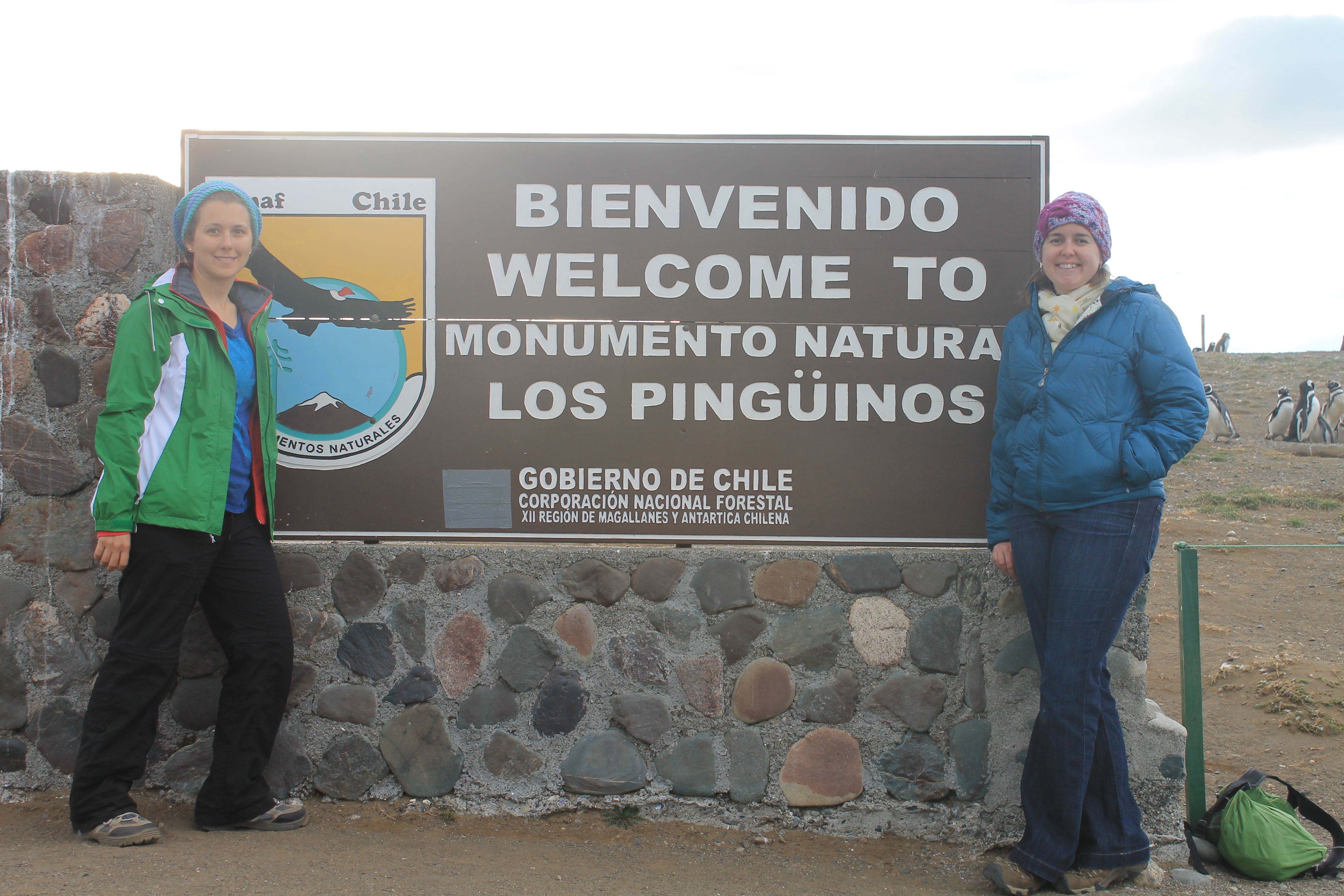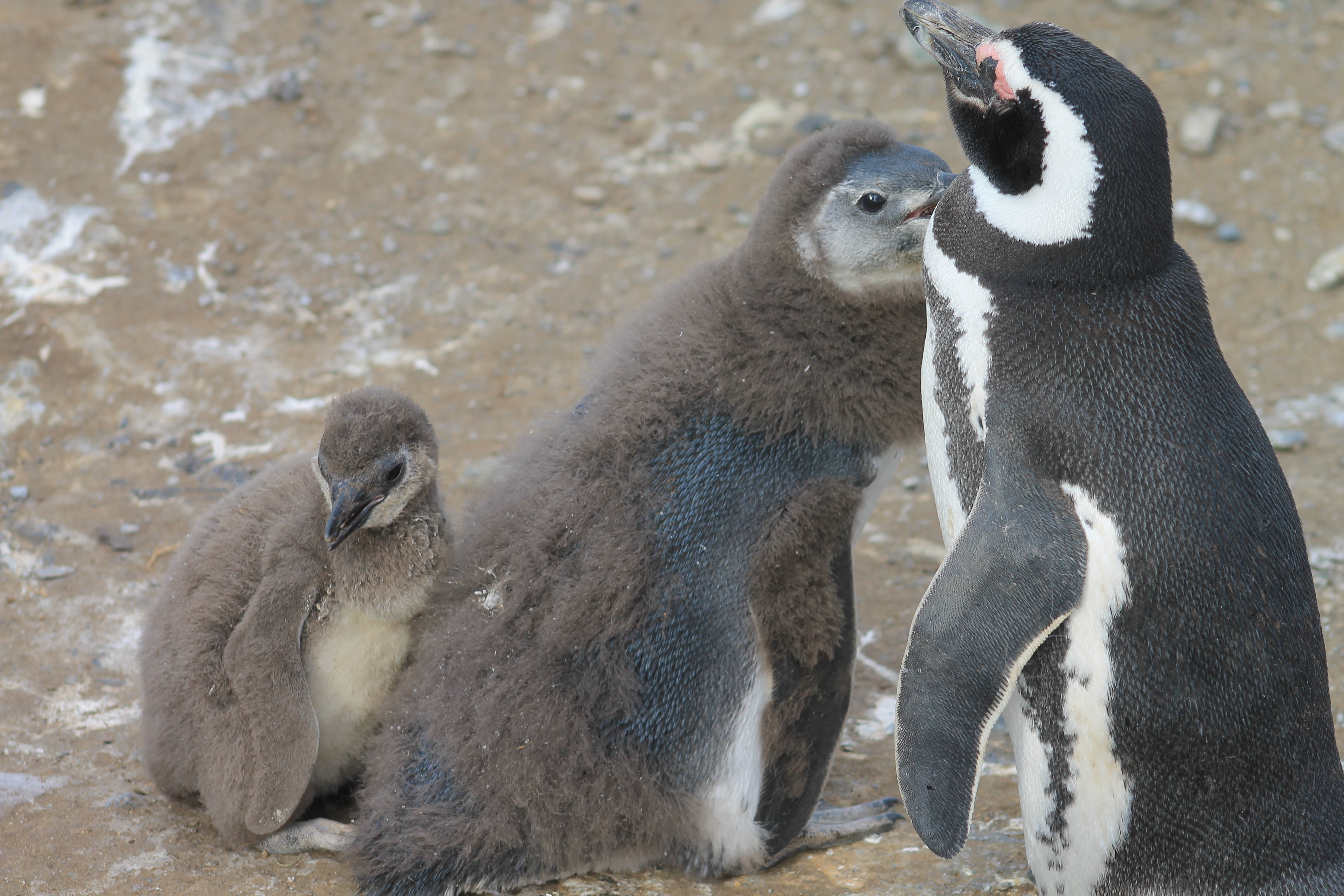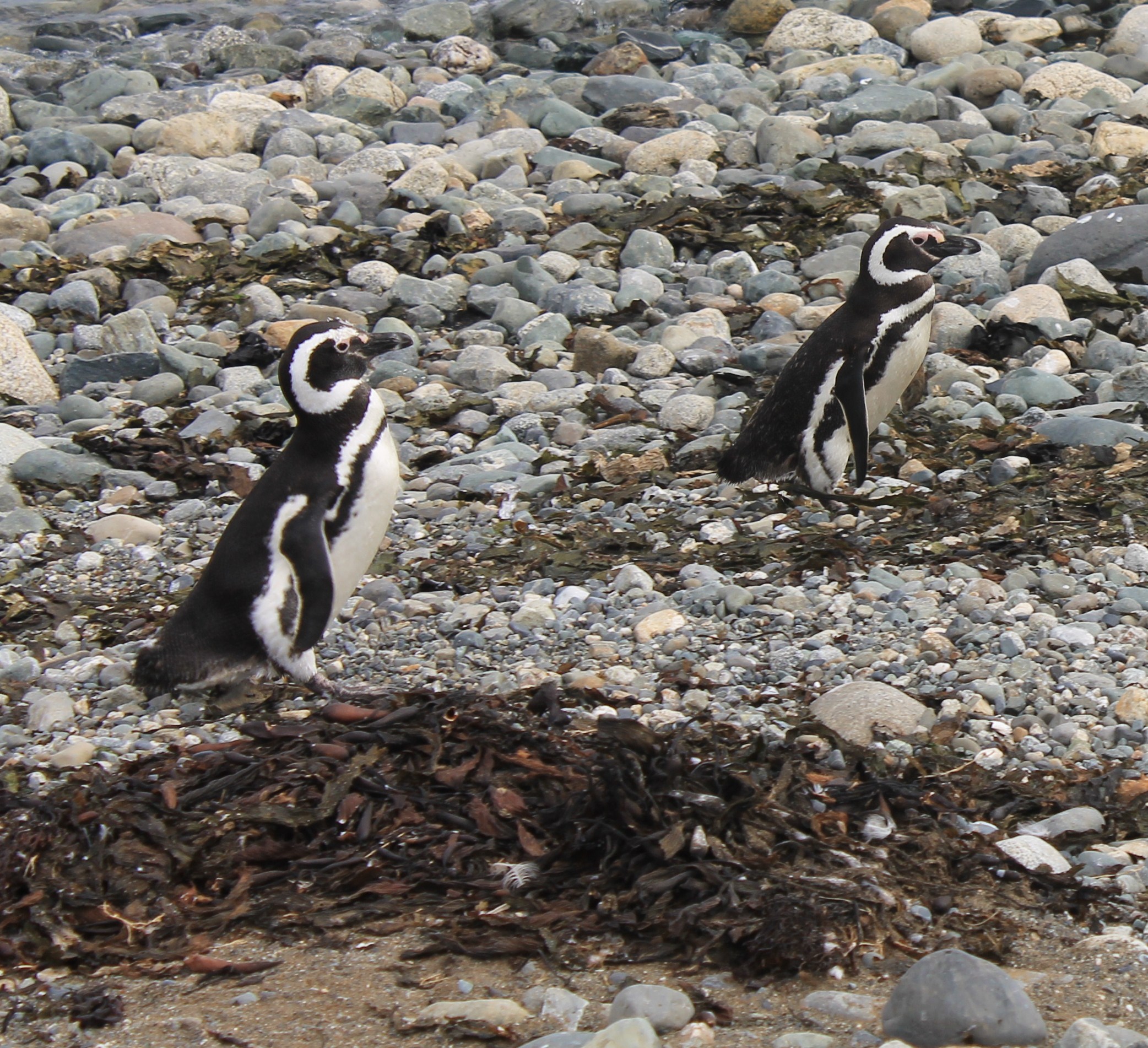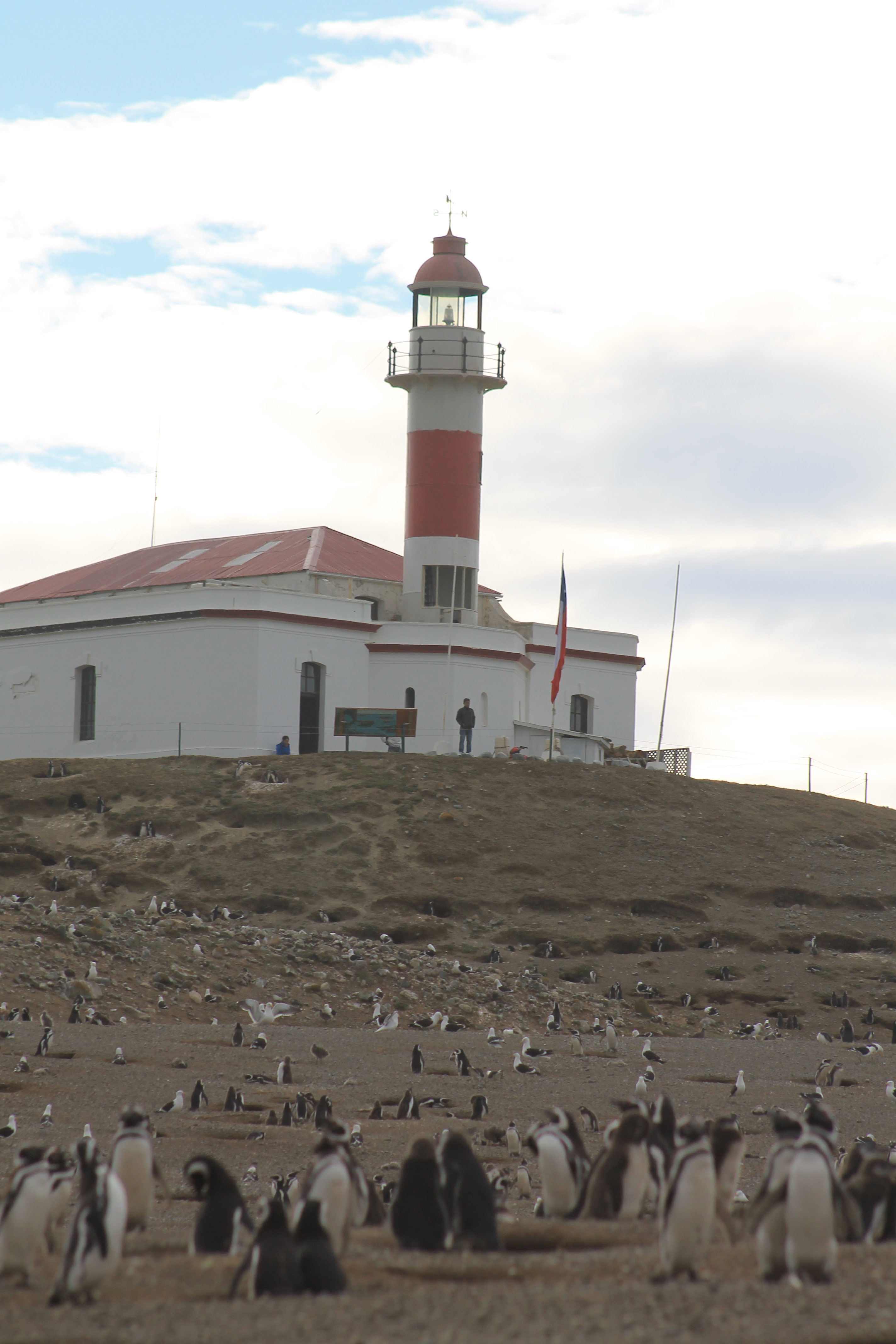By Michelle Marraffini
Invertebrate Zoology Lab
Penguin colony on Isla Magdalena with over 60,000 breeding pairs
Isla Magdalena is a small island in the Strait of Magellan off the coast of Punta Arenas, Chile. In 1982 it was declared a national monument, Los Pinguinos Natural Monument as the breeding location for several seabird species including gulls, cormorants, and the Magellanic Penguin which has been estimated at over 60,000 breeding pairs. Magellanic penguins were named after the explorer Ferdinand Magellan who spotted the birds in 1520 as he sailed around the tip of South America. Magellanic penguins are found on coastlines on both the Atlantic and Pacific shores and are the only penguins to breed on the Patagonian mainland.

The breeding season lasts from September through February during which penguin couples dig burrows for their nests or hide their nests under shrubs. A pair may use the same burrow for years where the females usually lay two eggs that hatch after five or six weeks. Juveniles have waterproof feathers after two months and are ready to head out into the ocean, but it can take up to two years for chicks to get the full black and white plumage of the adults.

Students from Global Kelps Systems course in Chile took a slight detour (before class began) out on the ferry to the Isla Magdalena. Sara and I took off on ferry Melinka across the thankfully calm, Strait of Magellan. As the boat approached the Island we could see the lighthouse in the distance, the kelp forest surrounding the island, and a small number of penguins swimming and jumping alongside the boat. Once on shore, we got the chance to walk among thousands of Pinguinos!!! We watched as they crossed the pathway from their nests to the ocean to feed or looked after their chicks playing in the surf. It was an amazing experience to get to be so close to the penguins but at the same time it made us think about the protection laws we have here in Monterey Bay like the Marine Mammal Protection Act. A few of the visitors to the Island did not respect the privacy of the penguins, it is important to remember that as visitors we need to keep our distance and not chase after the animals.

The populations of these penguins are being threatened by the commercial fishing and the oil industry, which depletes schools of fish and the birds become entangled in the nets. It has also been estimated that more than 40,000 penguins die in Argentina and in the Falkland Islands each year due to oil pollution. The Wildlife Conservation Society has been working with local partners in Patagonia since the 1960’s helping to conserve these flightless birds, and in 2008 helped achieve two victories for the Magellanic penguin in Argentina: a ban on commercial fishing at Burdwood Bank and creation of a marine park at Golfo San Jorge. These victories are key to protecting habitats for the birds and their prey.


